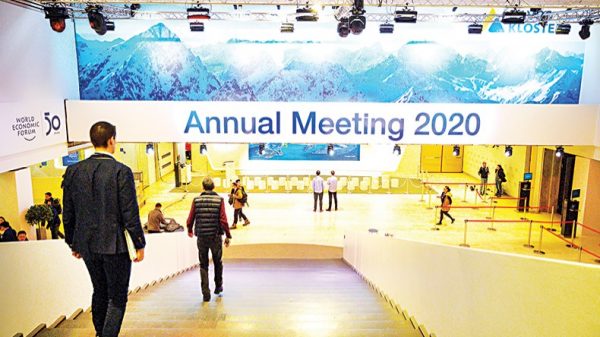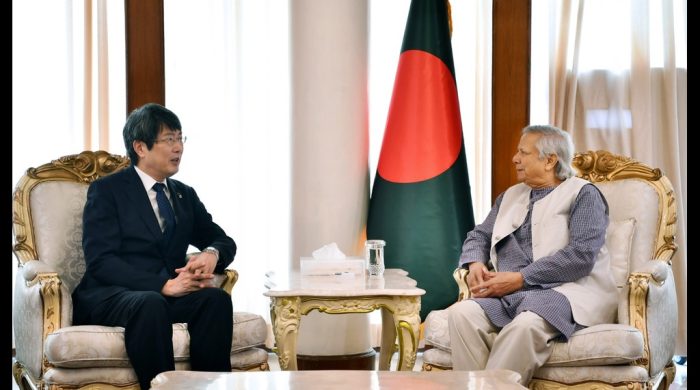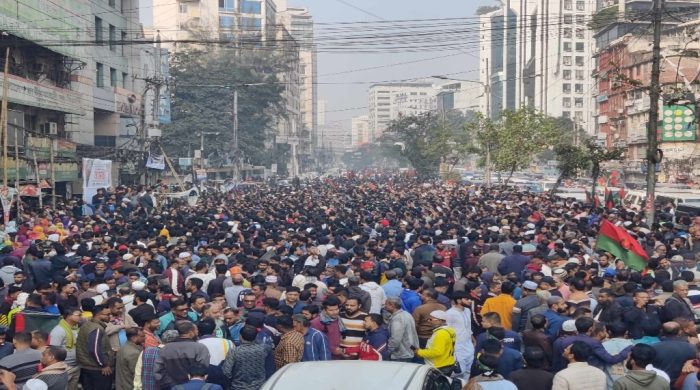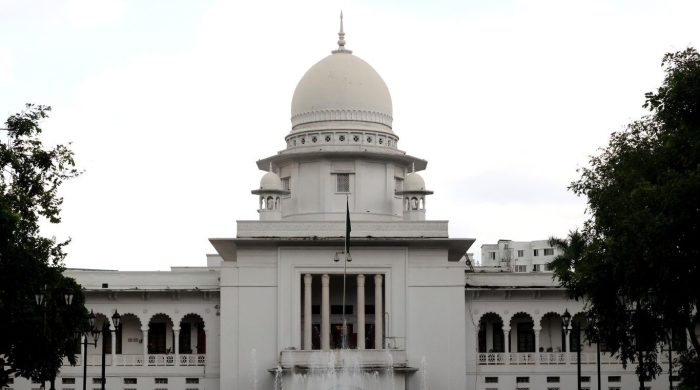Voice of capitalist system from Davos

- Update Time : Tuesday, January 21, 2020
- 270 Time View

The mainstream likes to play with words, and dislikes to dig truths. That is to hoodwink the commoners. So one of the foremost tasks is to tear down covers of mystery the mainstream puts on facts concerning life, on issues in economy and politics, writes Farooque Chowdhury
With usual high hope and promise, the Davos annual ritual is on the stage. But the promise and hope appear false.
The World Economic Forum’s Switzerland meeting beginning on January 21 has become one of the voices of the world capitalist system as it considers itself ‘the foremost creative force for engaging the world’s top leaders […] to shape global, regional and industry agendas […].’ But with capitalism as the dominating force in the world, what can be shaped other than the destruction of lives on this planet? Will the Davos elites question capitalism?
The meet and the WEF’s Global Risk Report are two of the significant weather-meters to gauge the weather the system is bumping into. Many capitans of the capitalist system express their perception about the situation they are facing — ‘the most pressing issues on the global agenda.’ These are actually the fear and the uncertainty the system is failing to get rid of. The participants include the world’s top politicians, academics, and business and NGO leaders.
The 2020 meeting theme is ‘Stakeholders for a Cohesive and Sustainable World.’ Its cherished commitment is ‘to improve the state of the world.’ A capitalist world system can never be cohesive and sustainable and it cannot improve the world as the system breeds incoherence and chaos. The system itself is the evidence.
Hopeless condition
THE Davos Report — Global Risks Report 2020 — fails to hide the hopeless condition the world capitalist system is experiencing. The report’s ‘The Fraying Fundamentals’ chapter cites the facts:
Stagnation
DOWNWARD pressure on the global economy from macroeconomic fragilities and financial inequality continued to intensify in 2019. The global economy is at increasing risk of stagnation. Tense geo-economic and geopolitical landscape and domestic challenges have exacerbated uncertainty. There is, according to the IMF speak, ‘synchronised slowdown’ — weakened growth among the world’s economies. A gradual deceleration has already been under way. The slowdown of the world economy has further materialised. By the third quarter of 2019, six of the world’s largest seven economies (Japan is the exception), which together represent more than a half of global production, decelerated. The outlook is also precarious for other G20 economies. Most of these economies are growing at a rate below 2 per cent. There is the risk of a prolonged slowdown of the world economy. The IMF has lowered its last five estimates of world output for 2019 and expected a growth rate of 3 per cent —a sharp decline from 3.6 per cent in 2018 and the slowest since the 1.7 per cent contraction in 2009. For 2020, the IMF also downgraded its forecast from 3.7 per cent to 3.4 per cent.
Slowing trade
‘NATIONALIST’ policies are challenging low trade barriers, fiscal prudence and strong global investment. Rising trade barriers, lower investment and high debt are straining economies around the world. Global trade is slowing down. World Trade Organisation data for the first three quarters of 2019 show that total world merchandise trade decreased 2.9 per cent from the previous year. It decreased in the world’s top 10 traders. Reduced trade volumes are largely the result of what the WTO has called ‘historically high levels of trade restrictions.’ Turning trade to a weapon of rivalry may persist.
Decreased FDI
GLOBALLY, investment has been affected by low expected returns, uncertainty about economic policy in major economies, and ongoing and emerging geopolitical tensions. Foreign Direct Investment remains lower than it was before the 2008–09 crisis. It has decreased for the last three years. In 2018, net FDI inflows were down 38 per cent compared with 2017 and less than a half of the level they were in 2015. The sharpest decline has been in the euro area, where less appealing yields, lower production and uncertainty surrounding Brexit have led net FDI inflows to the region to fall to a record low since the euro was adopted in 1999.
High debt
PRIVATE and public debt has been accumulating since the crisis. According to the IMF, the global ratio of debt-to-GDP increased by 11 percentage points between 2009 and 2017. Across G20 economies, public debt is expected to reach 90 per cent of the GDP in 2019 — the highest level on record — and to grow even more, to 95 per cent in 2024. Private debt has built up on the basis of lower interest rates — particularly in China and the US, where more than 40 per cent of total private debt is located. In the second quarter of 2019, non-financial corporate debt reached 156 per cent of the GDP in China. In the United States, non-financial corporate debt reached 47 per cent of the GDP in the third quarter — the highest level ever recorded — according to Federal Reserve Bank of St Louis data. The IMF has listed ‘rising corporate debt burdens’ as a key vulnerability in the global financial system.
Tools unavailable
THERE is a risk that the tools previously used to brake economic slides may no longer be available. Financial market stress and strained public finances are creating uncertainty as to whether conventional monetary and fiscal policy instruments could be as effective in the future.




















